Refine search
Actions for selected content:
3326 results in Artificial Intelligence and Natural Language Processing
3 - Gatherings
-
- Book:
- The Quest for Artificial Intelligence
- Published online:
- 05 August 2013
- Print publication:
- 30 October 2009, pp 49-61
-
- Chapter
- Export citation
PART II - EARLY EXPLORATIONS: 1950S AND 1960S
-
- Book:
- The Quest for Artificial Intelligence
- Published online:
- 05 August 2013
- Print publication:
- 30 October 2009, pp 47-48
-
- Chapter
- Export citation
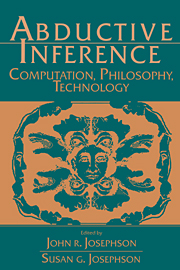
Abductive Inference
- Computation, Philosophy, Technology
-
- Published online:
- 08 October 2009
- Print publication:
- 26 August 1994
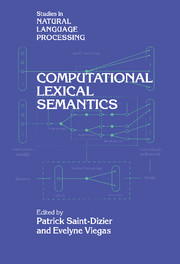
Computational Lexical Semantics
-
- Published online:
- 29 September 2009
- Print publication:
- 24 February 1995
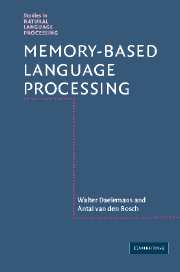
Memory-Based Language Processing
-
- Published online:
- 22 September 2009
- Print publication:
- 01 September 2005
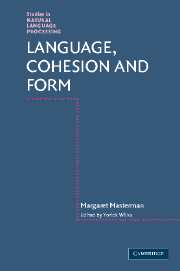
Language, Cohesion and Form
-
- Published online:
- 22 September 2009
- Print publication:
- 16 January 2005
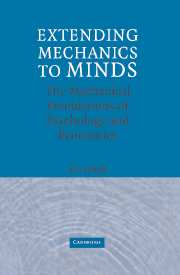
Extending Mechanics to Minds
- The Mechanical Foundations of Psychology and Economics
-
- Published online:
- 21 September 2009
- Print publication:
- 22 May 2006
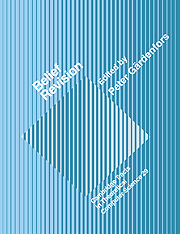
Belief Revision
-
- Published online:
- 21 September 2009
- Print publication:
- 21 May 1992
NLE volume 15 issue 4 Cover and Back matter
-
- Journal:
- Natural Language Engineering / Volume 15 / Issue 4 / October 2009
- Published online by Cambridge University Press:
- 16 September 2009, pp. b1-b6
-
- Article
-
- You have access
- Export citation
Recognizing entailment in intelligent tutoring systems*
-
- Journal:
- Natural Language Engineering / Volume 15 / Issue 4 / October 2009
- Published online by Cambridge University Press:
- 16 September 2009, pp. 479-501
-
- Article
- Export citation
Extracting paraphrase patterns from bilingual parallel corpora
-
- Journal:
- Natural Language Engineering / Volume 15 / Issue 4 / October 2009
- Published online by Cambridge University Press:
- 16 September 2009, pp. 503-526
-
- Article
- Export citation
A machine learning approach to textual entailment recognition
-
- Journal:
- Natural Language Engineering / Volume 15 / Issue 4 / October 2009
- Published online by Cambridge University Press:
- 16 September 2009, pp. 551-582
-
- Article
- Export citation
Inferring textual entailment with a probabilistically sound calculus*
-
- Journal:
- Natural Language Engineering / Volume 15 / Issue 4 / October 2009
- Published online by Cambridge University Press:
- 16 September 2009, pp. 459-477
-
- Article
- Export citation
NLE volume 15 issue 4 Cover and Front matter
-
- Journal:
- Natural Language Engineering / Volume 15 / Issue 4 / October 2009
- Published online by Cambridge University Press:
- 16 September 2009, pp. f1-f2
-
- Article
-
- You have access
- Export citation
Assessing the impact of frame semantics on textual entailment
-
- Journal:
- Natural Language Engineering / Volume 15 / Issue 4 / October 2009
- Published online by Cambridge University Press:
- 16 September 2009, pp. 527-550
-
- Article
- Export citation
Wisdom of crowds versus wisdom of linguists – measuring the semantic relatedness of words
-
- Journal:
- Natural Language Engineering / Volume 16 / Issue 1 / January 2010
- Published online by Cambridge University Press:
- 09 September 2009, pp. 25-59
-
- Article
- Export citation
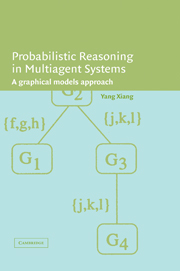
Probabilistic Reasoning in Multiagent Systems
- A Graphical Models Approach
-
- Published online:
- 31 August 2009
- Print publication:
- 26 August 2002

Building Natural Language Generation Systems
-
- Published online:
- 25 August 2009
- Print publication:
- 28 January 2000
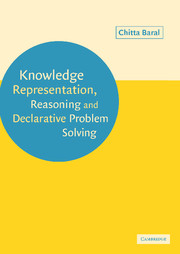
Knowledge Representation, Reasoning and Declarative Problem Solving
-
- Published online:
- 13 August 2009
- Print publication:
- 09 January 2003
Appendix A - Aggregation of infinitely many arguments
-
- Book:
- Aggregation Functions
- Published online:
- 05 March 2013
- Print publication:
- 09 July 2009, pp 397-409
-
- Chapter
- Export citation
